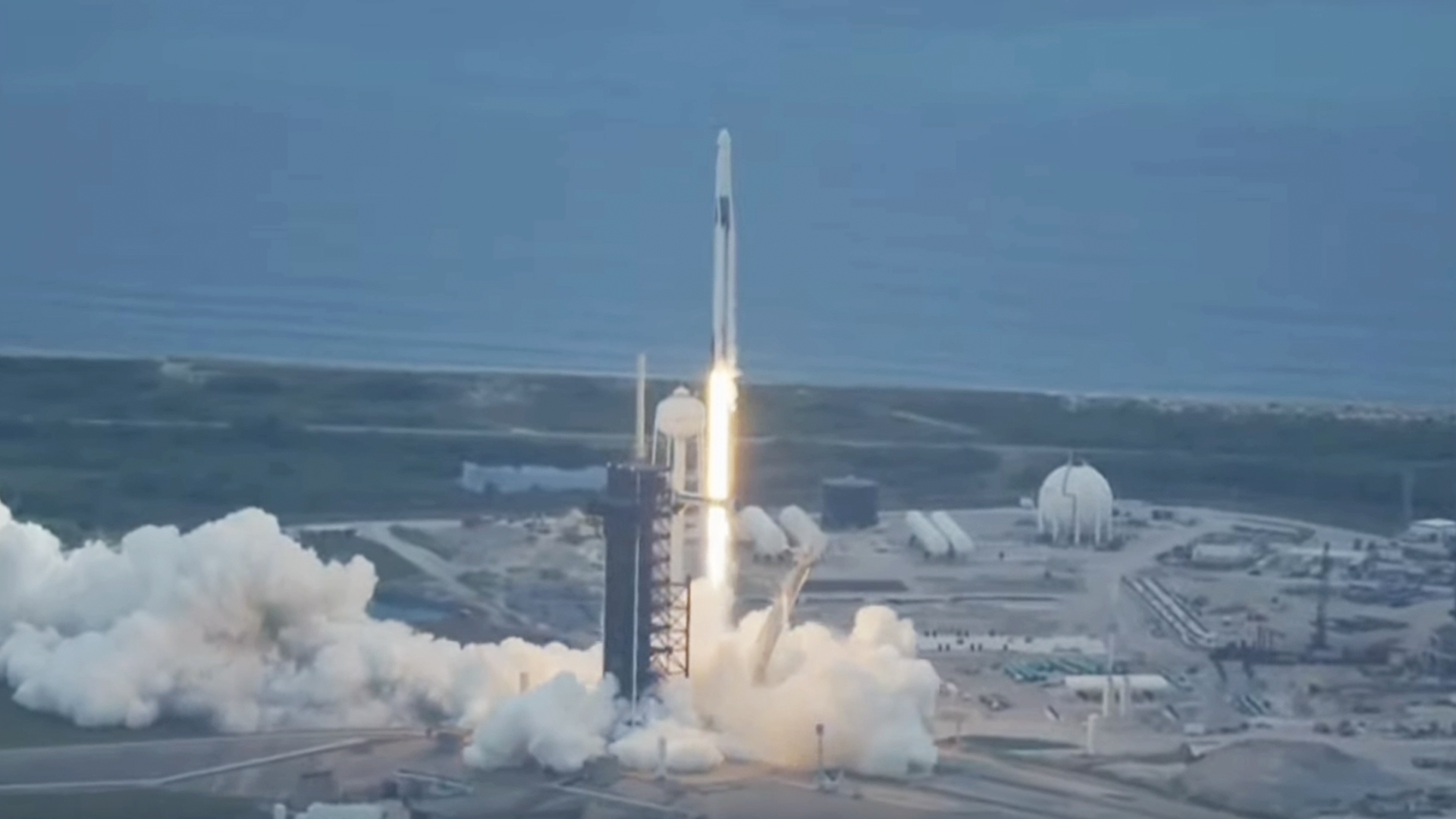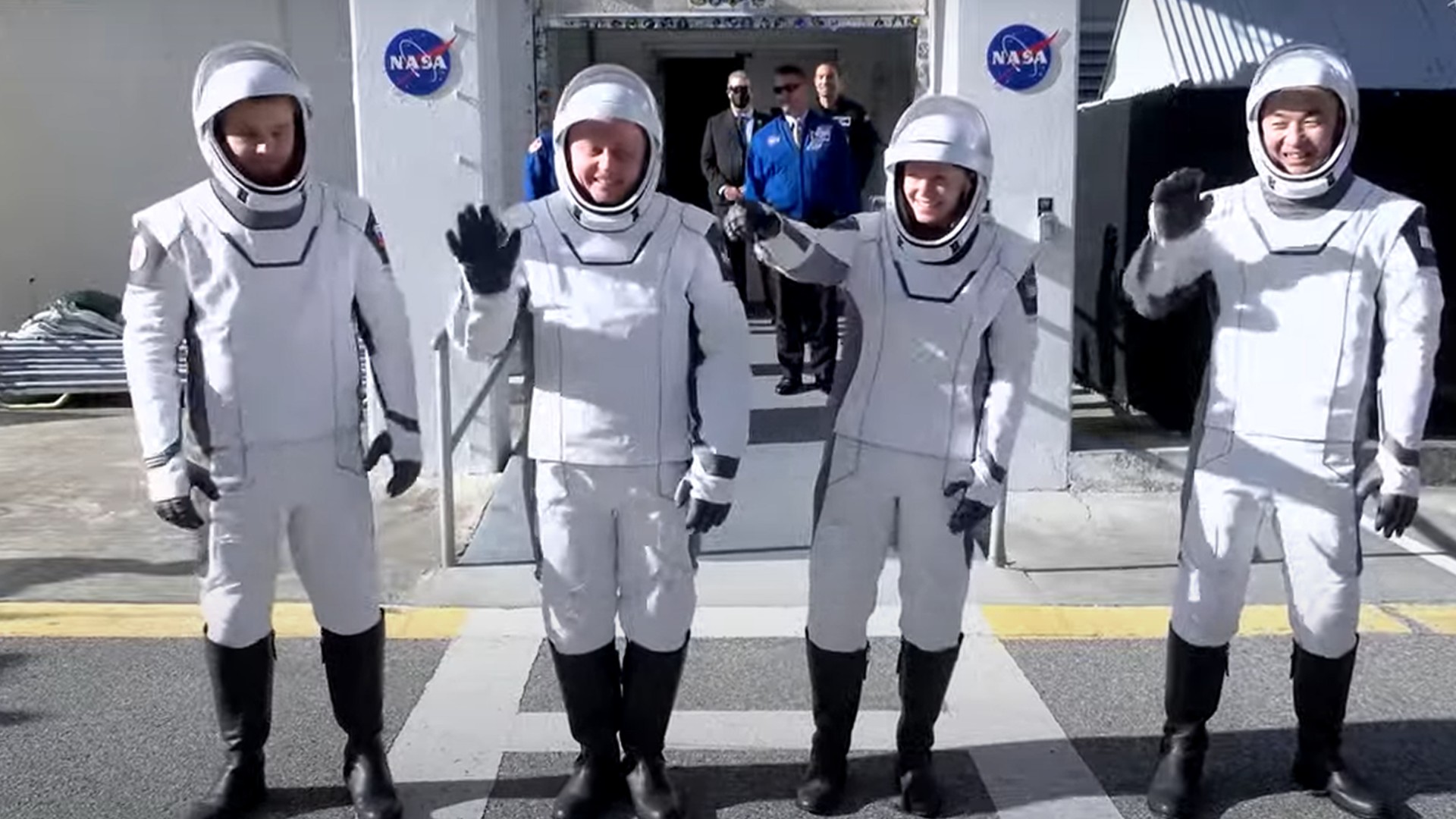SpaceX launched its eleventh operational astronaut mission for NASA today (Aug. 1), sending the four Crew-11 astronauts on a flight toward the International Space Station.
A SpaceX Falcon 9 rocket took off from Launch Complex 39A at NASA’s Kennedy Space Center (KSC) in Florida at 11:43 a.m. EDT (1543 GMT) today. Atop the rocket was the company’s Crew Dragon Endeavour spacecraft making its sixth flight, a reuse record for Crew Dragon vehicles.
The launch occurred a day later than originally planned; SpaceX tried to get Crew-11 off the ground on Thursday (July 31) but had to scrub that attempt with about a minute left in the countdown clock due to intruding clouds.

Just under eight minutes after launch, the mission’s Falcon 9 booster came down for a landing at SpaceX’s Landing Zone 1 (LZ-1) at Cape Canaveral Space Force Station, which is next door to KSC, creating a thunderous sonic boom audible for miles.
This marked the last landing that will happen at LZ-1, which will now be retired. In March 2023, the U.S. Space Force announced that Launch Complex 13, where LZ-1 is located, will be leased to two private companies, Phantom Space and Vaya Space.
The Space Force’s announcement added that private providers like SpaceX can submit requests for landing zone capabilities at their own launch complexes, “which will then go through an extensive evaluation process.”
SpaceX still operates another booster landing site on the Cape, however, called Landing Zone 2.
Crew-11 consists of NASA astronauts Zena Cardman and Mike Fincke, Kimiya Yui of the Japan Aerospace Exploration Agency (JAXA) and Oleg Platonov of Russia’s space agency Roscosmos.

This will be the first spaceflight for Crew-11 commander Cardman, who was originally scheduled to launch on the Crew-9 mission. Cardman was removed from that mission because Crew-9 ended up launching to the International Space Station (ISS) with only two astronauts on board in order to make room for NASA astronauts Butch Wilmore and Suni Williams on the return trip. The duo were left without a dedicated ride home after the Boeing Starliner spacecraft that ferried them to the ISS on its first crewed test flight in June 2024 encountered leaks and propulsion issues.
Fincke will be making his fourth trip to space on Crew-11 while serving as pilot, having previously flown three space shuttle missions to the ISS. As the most experienced spaceflyer, Fincke said he’s looking forward to seeing the reactions of his crewmates, two of whom are making their first trip to orbit.
“I remember how moving it was, and how breathtaking it was for me, and I want to share their joy in that,” Fincke previously told Space.com.
Crew-11 marks the second spaceflight for mission specialist Kimiya Yui of Japan, who previously spent 142 days on the ISS during Expedition 44/45 in 2015. During that mission, Yui helped construct laboratory equipment in Japan’s Kibo science module.
Rounding out the crew is Russia’s Oleg Platonov, who is making his first trip into space and serving as mission specialist.
Once their spacecraft is docked safely on the ISS and the hatch is opened, the four Crew-11 astronauts will begin relieving the members of SpaceX’s previous mission for NASA, Crew-10. Crew-11 docking is currently scheduled for 3 a.m. ET (0700 GMT) on Saturday (Aug. 2).
NASA overlaps astronaut missions to the ISS as part of the agency’s routine crew rotation in order to maintain a continuous presence on the space station. The Crew-10 and Crew-11 astronauts will overlap for about a week to ensure a smooth handover of science experiments and responsibilities, maintenance tasks and station operations.
After Crew-11 is settled in, the four Crew-10 astronauts — who launched in March 2025 — will make their way back down to Earth aboard the SpaceX Crew Dragon spacecraft that brought them there.
The Crew-11 astronauts will spend roughly six months aboard the orbital laboratory conducting science experiments that include simulating moon landings near the lunar south pole, testing how astronauts can protect their eyesight from the effects of microgravity, and studying how plant cells divide in space. In addition, the crew will conduct experiments to “produce a higher volume of human stem cells and generate on-demand nutrients,” according to NASA.
However, NASA is considering extending Crew Dragon missions to eight months, according to Dana Weigel, the International Space Station Program Manager at NASA. “We’re looking at that right now for the Dragon flights, and so we are looking at the potential to extend this current flight, Crew-11,” Weigel said during a prelaunch press conference on Wednesday (July 30).
Aside from relieving the Crew-10 astronauts for their return journey home, Crew-11 will see the arrival of the Roscosmos Soyuz MS-28 mission in November 2025, which will welcome NASA astronaut Chris Williams and cosmonauts Sergey Kud-Sverchkov and Sergei Mikaev. A Northrop Grumman robotic resupply spacecraft is also expected to launch and dock during Crew-11’s stay.
As its name implies, Crew-11 is the eleventh operational astronaut mission SpaceX has flown for NASA, but the twelfth flight under the agency’s Commercial Crew Program, in which NASA hired private companies to send astronauts to and from the ISS. The first Crew Flight Test of Boeing’s Starliner spacecraft in June 2024 was also conducted under the program.
Source link

